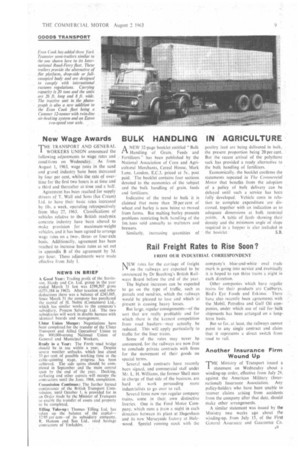BULK HANDLING IN AGRICULTURE
Page 11

If you've noticed an error in this article please click here to report it so we can fix it.
ANEW 32-page booklet entitled "Bulk Handling of Grain, Feeds • and Fertilizers " has been published by the National Association of Corn and Agricultural Merchants, Cereal House. Mark Lane, London, E.C.3, priced at 5s., post paid. The booklet contains four sections devoted to the economics of the subject and the bulk handling of grain, feeds and fertilizers.
Indicative of the trend to bulk it is claimed that more than 30 per cent of wheat and barley is now being so moved from farms. But malting barley presents problems restricting bulk handling of the lm. tons sold annually to rnaltsters and brewers.
Similarly, increasing quantities of poultry feed arc being delivered in hulk, the present proportion being 20 per cent. But the recent arrival of the polythene sack has provided a ready alternative to the bulk handling of fertilizers.
Economically. the booklet confirms the statements repeated in The Commercial Motor that benefits from the ;tcloption of a policy of bulk delivery can be delayed until such a service has been fully developed. Vehicle costs in relation to complete expenditure are discussed, together with an indication as to adequate dimensions at bulk terminal points. A table of feeds showing their density and the minimum angle of slope required in a hopper is also included in
the booklet.S.B.




























































































